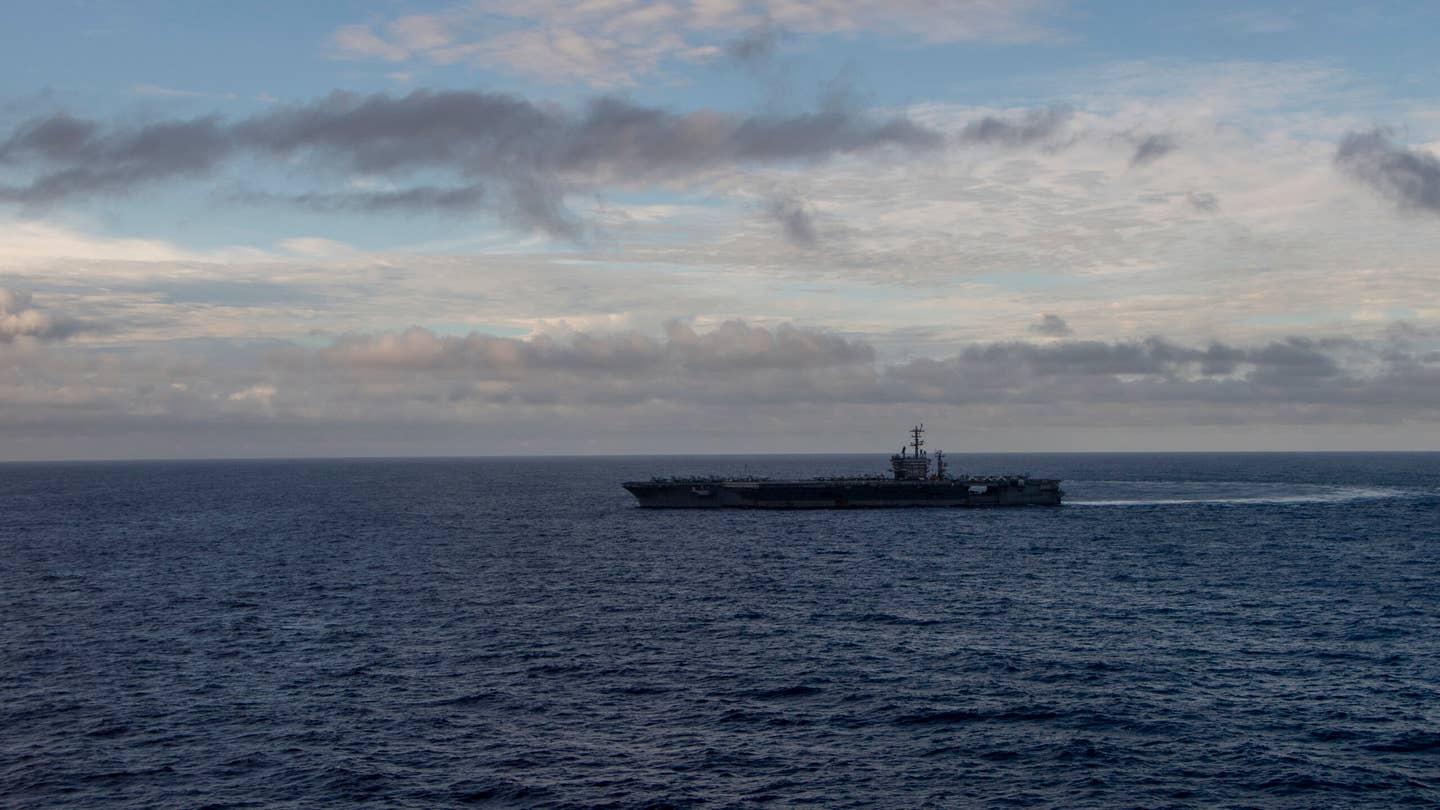America has way more aircraft carriers than most people think

The aircraft carrier USS Nimitz (CVN 68) steams through the Pacific Ocean. (U.S. Navy photo by Mass Communication Specialist 2nd Class Samuel Osborn)
SUMMARY
The American Navy officially has 11 aircraft carriers, mostly Nimitz-class carriers with one Ford-class carrier. That's already almost as much as the rest of the world combined. But America also has a massive fleet of another type of ship with similar design and purpose to the old escort carriers of World War II: The amphibious assault ships. These amphibious assault ships are almost double the size of America's carrier fleet.
The changing definition of aircraft carrier
Lots of military terms shift over time. The original tanks had male and female variants, but female variants are now known as infantry support vehicles. In World War II, the growing importance of aircraft carriers led to changes in ship design and construction.
America's fleet carriers were highly effective and in high demand. But constructing ships is slow, costly, and prone to cost and time overruns. And the Navy needed more carriers than it had. But for many of the missions, a full fleet carrier was unnecessary. During missions to support amphibious assaults or to escort convoys, a smaller air arm was sufficient.
So the Navy came up with the idea for escort carriers, smaller vessels that could be mass-produced and deployed. It built 122 escort carriers, including 50 of the largest class of escort carriers, the Casablanca class.
Now, we can use the term "amphibious assault ships" for the vessels that provide air power for amphibious assaults, shuttle humanitarian supplies ashore, and hunt for enemy submarines.
Modern LHAs and LHDs
The Marine Corps and Navy operate the current amphibious assault ships. The Navy operates them in their amphibious ready groups and expeditionary strike groups, and the Marine Corps uses them in Marine expeditionary units and Marine expeditionary brigades.
As the Navy says of them:
Amphibious warships are designed to support the Marine Corps tenets of Operational Maneuver From the Sea (OMFTS) and Ship to Objective Maneuver (STOM). They must be capable of sailing in harm's way and enable rapid combat power buildup ashore in the face of opposition. Because of their inherent capabilities, these ships have been and will continue to be called upon to also support humanitarian and other contingency missions on short notice. The United States maintains the largest and most capable amphibious force in the world.
The ships are split between LHAs and LHDs. Landing helicopter assault ships are capable of landing and humanitarian operations. They can carry helicopters and jets and, in those equipped with a well deck, hovercraft for beach landings. The Marine Corps experimented with maximizing the number of jets it deploys on LHAs, and it managed 16 F-35B Lightning IIs on the USS Tripoli. These "Lightning Carriers" can fight from the ship or re-deploy to bases ashore, once established.
The Landing helicopter docks are older but just as large as the LHAs. They carry similar equipment to the LHAs, and they used to be known as "Harrier Carriers," like the LHAs being "Lightning Carriers."
Either ship type is the same displacement as Indian aircraft carriers the INS Vikramaditya and Vikrant. Each of those ships displaces about 45,000 tons. France's carrier, the Charles de Gaulle, is smaller at 42,000 tons displaced. China's carriers are a little larger, with the Liaoning displacing just over 60,000 tons. That still puts the Chinese carrier closer to an LHA or LHD than to the Ford-class carriers, which displace 100,000 tons.
And if America counted the LHAs and LHDs as carriers, the U.S. carrier fleet would be 20 ships, more than the rest of the world combined.
SHARE
